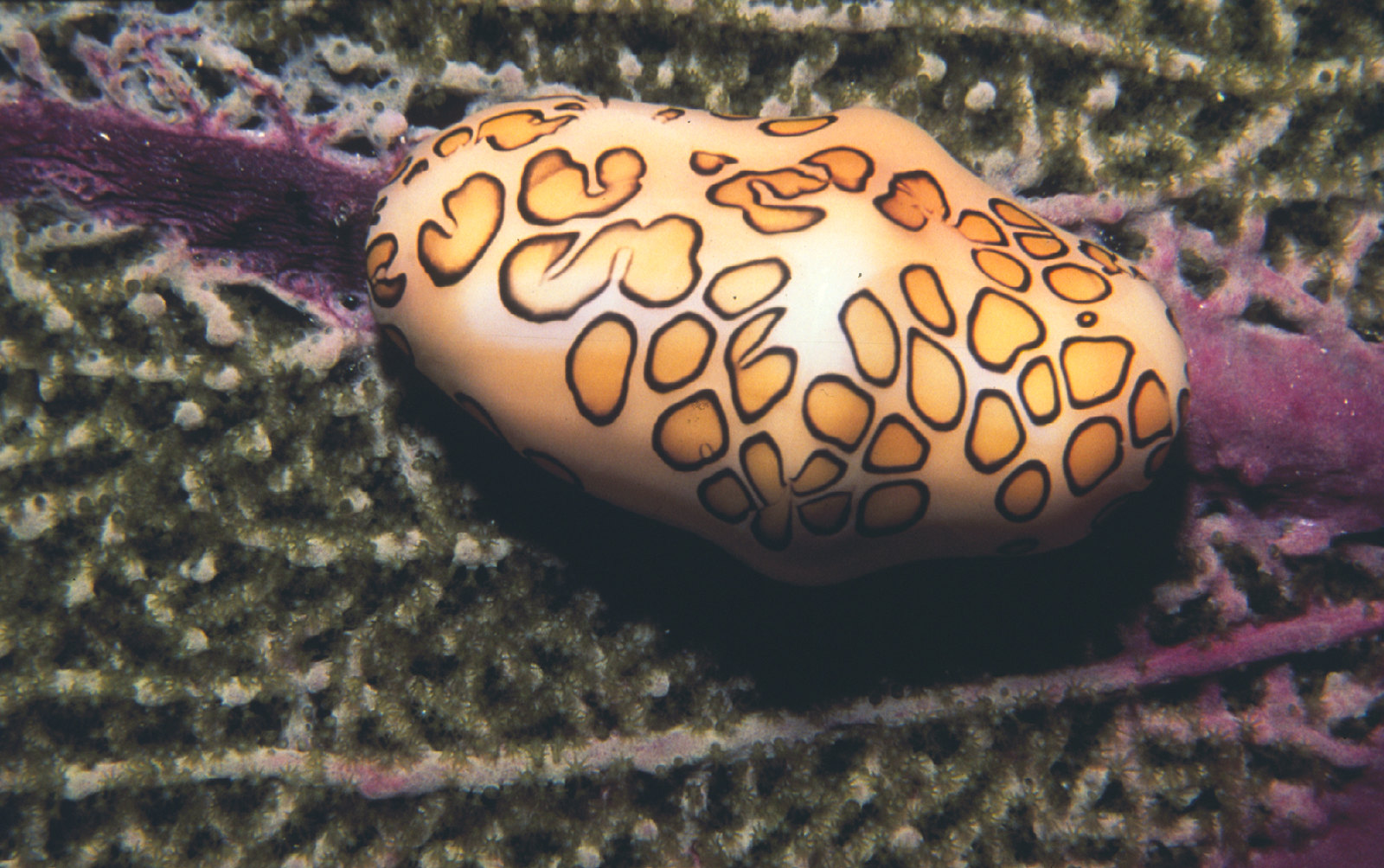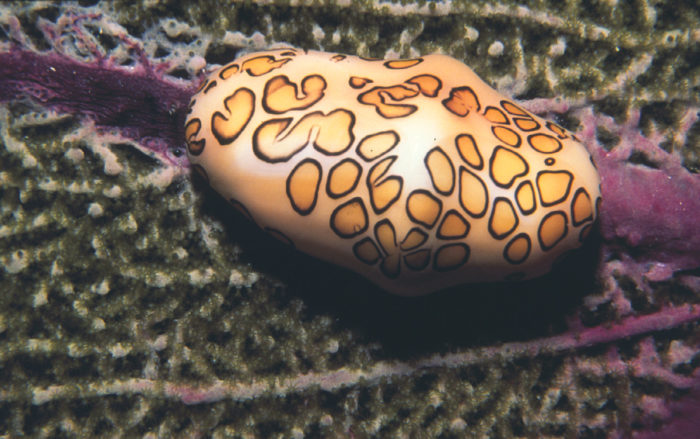
Sea Wonder: Flamingo Tongue Snail
These brightly colored marine mollusks may be small, but they are mighty enough to feed on toxic sea fans without issue. This sea wonder is none other than the flamingo tongue snail!
Appearance
The flamingo tongue snail (Cyphoma gibbosum) is a small, brightly colored marine snail found in tropical waters. Its markings include bright orange and yellow spots with black markings You wouldn’t be alone in thinking its brilliant colors and patterns are part of its shell – this is the case with many snails, whether they live on land or in the ocean – however, the flamingo tongue snail is unique in that its vibrantly colored and soft body envelops its shell, which is surprisingly all white.
Flamingo tongue snails are usually 0.75 to one-inch in length with a wavy “foot” (radula) beneath their bodies used to move an eat, and two soft, antennae-like structures on their heads that contain their eyes.
Diet and Habitat
The flamingo tongue snail calls tropical and subtropical waters of the western Atlantic Ocean home, spanning from the coast of North Carolina down to Brazil, and throughout the Caribbean and Gulf of Mexico. Their range includes Florida Keys National Marine Sanctuary. They prefer shallower waters from 0 to 100 feet deep. Since they feed on the soft tissue of certain gorgonian corals, they live in coral reef communities. They are more active during the day and remain inactive at night, attaching themselves to gorgonian coral hosts for protection.
To feed, flamingo tongue snails using their radula (or “foot”) to secrete enzymes that allow them to scrape off and digest the soft tissue of sea fans, sea plums, and other gorgonian corals. The flesh of these corals is highly toxic to other animals, but the flamingo tongue snail has adapted to withstand those toxins and become toxic themselves for protection. However, there are larger predatory fish that don’t mind the bad taste and are immune to the toxins of the flamingo tongue snail. These predatory fish keep flamingo tongue snail populations in balance, thus helping to protect the coral reef. While humans don’t eat flamingo tongue snails, divers and other reef visitors will admire their coloration and remove snails from the reef, only to find later that their shells are plain white.
Life History
Unlike other species of snails, flamingo tongue snails do not change sex during their lifetime. Males and females mate throughout the year, and since they are mostly solitary animals, this occurs whenever males and females cross paths. After fertilization (which can take up to four days) females attach eggs to the bare skeletons of gorgonian corals created as a result of flamingo tongue snail grazing. Each individual egg contains up to 300 embryos, which hatch after an incubation cycle of about 10 days. Once hatched, larvae float within the water column where they feed on plankton and eventually transition through metamorphosis to reach their juvenile and adult stages, when they settle on reefs for the rest of their lives. We don’t know much about the lifespan of flamingo tongue snails, but scientists believe they can live to be at least two years old if not longer.
Threats and Conservation
Flamingo tongue snails are not known to be threatened or endangered, however, overcollection by snorkelers and divers is a threat to their populations. While healthy populations of these snails helps to keep coral reef communities in balance, threats to their ecosystems can remove predators and create opportunities for snail populations to flourish, resulting in increased damage to the reefs on which they live, and which are already threatened by climate change, ocean acidification, physical damage, and more.

